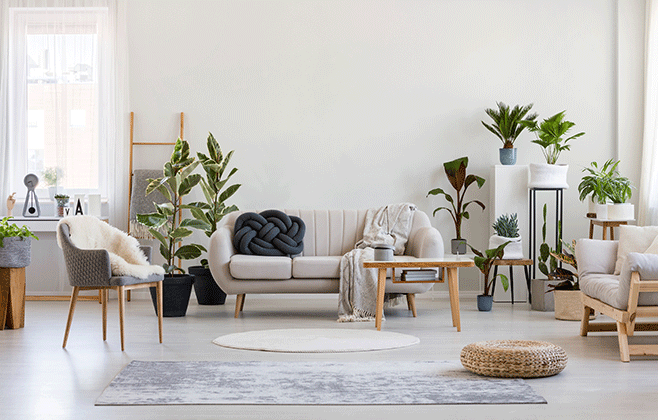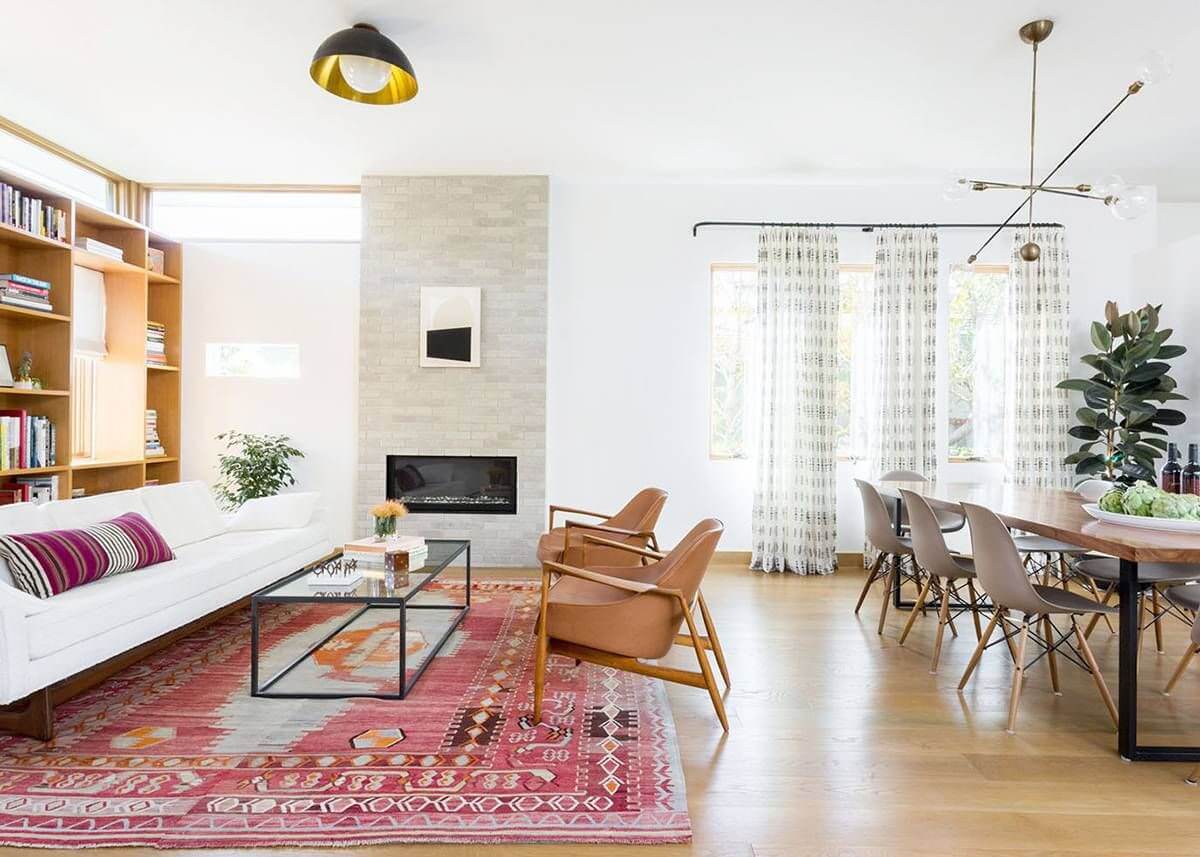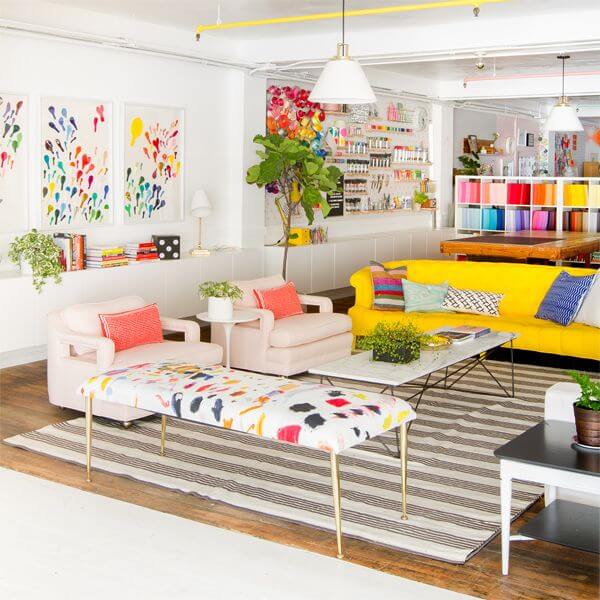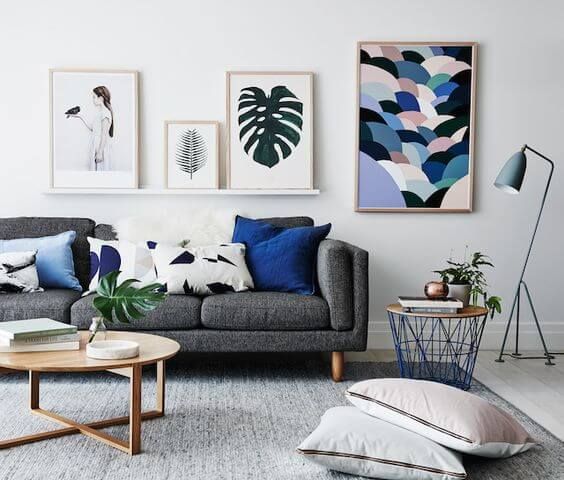In order for the living room to become a temple of harmony and balance, a few layout rules must be observed. This living space can become a place of relaxation and rest. Softness and simplicity are usually enough to transform it in a jiffy. Also called “raw”, this trend combines the spirit of nature with a “slow life” philosophy of life… Here are the details for creating a Zen decoration!
1. Create a zen space in your living room
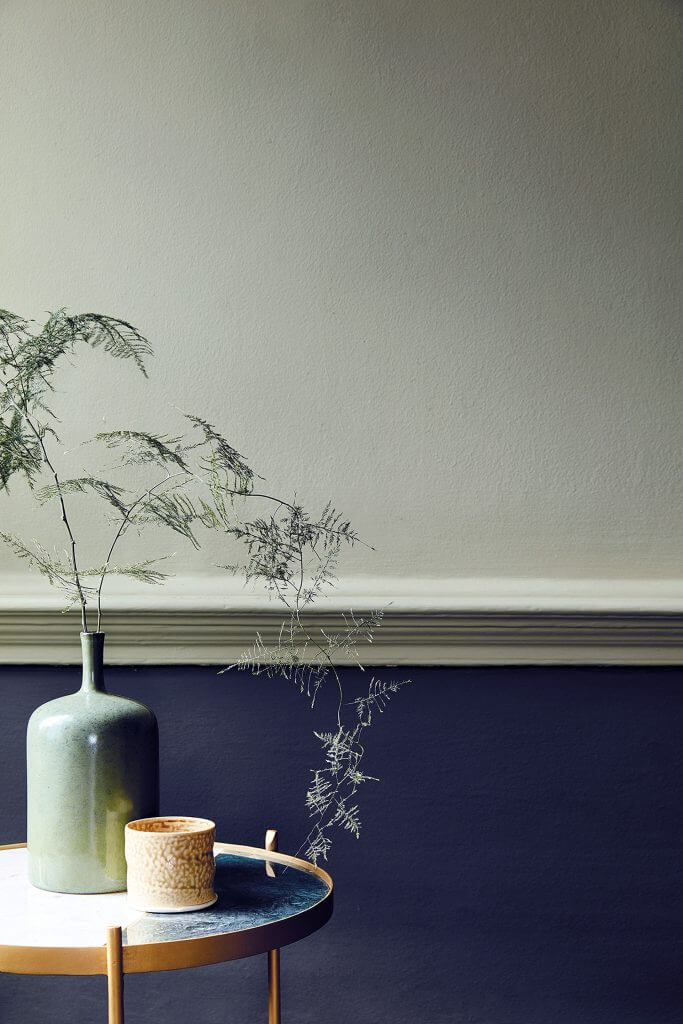
What could be better than coming home and finding a cozy cocoon? The “home” is indeed a refuge where everyone needs to feel at peace and security. For the home to provide this feeling of happiness and well-being, its interior layout must suggest order and harmony . Difficult to have a rested mind in a messy environment! Indeed, the exterior atmosphere has a huge influence on the interior feeling. The creation of a zen space in the living room allows to have a place to take refuge to read, to meditate or to rest.
To install a haven of peace at home, you must respect a good number of parameters from the Zen spirit: the style must be refined , the light must provide a feeling of softness , the decorative objects are chosen with care to avoid any futility , the furniture must provide maximum comfort , the colors must create a feeling of softness and harmony … These rules respected, it is appropriate for everyone to decorate their living room according to their personality and their way of life.
2. Create a clean space
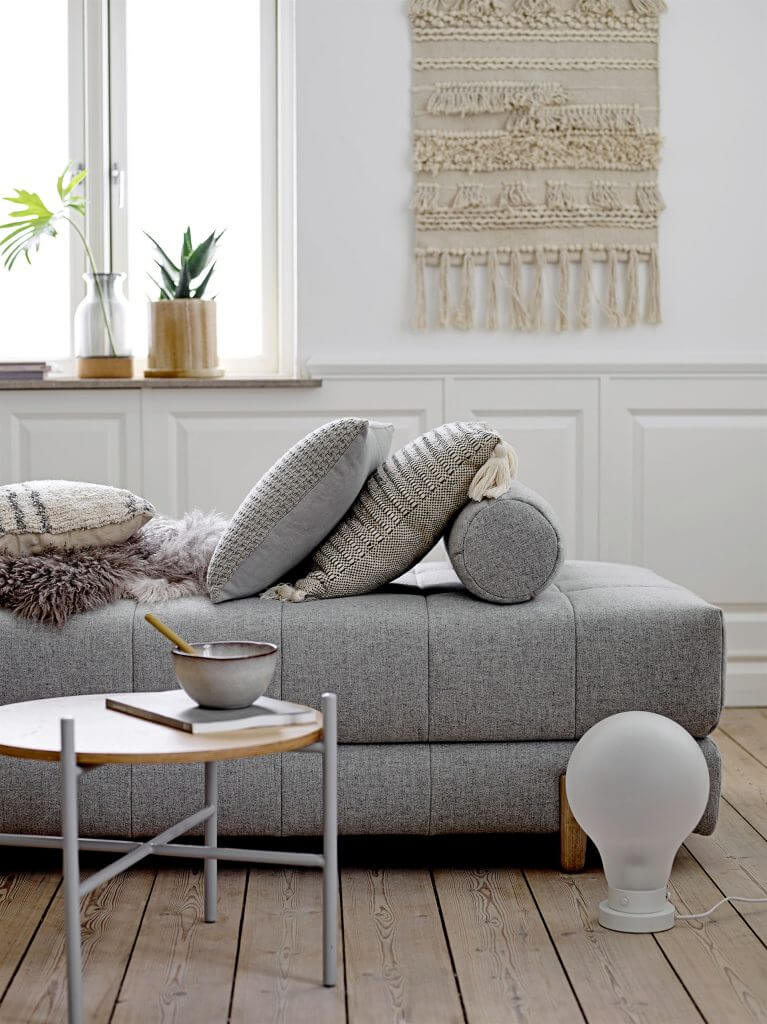
Zen draws its source from simplicity. You don’t have to be bothered with trivial things to feel good. It is thus necessary to get rid of all that is cumbersome and superfluous to keep only the essential. Bulky trinkets and buffets have no place in a Zen space. The use of decorative objects is permitted, but sparingly. Indeed, Zen decoration is based on sobriety and space. The use of warm and natural materials such as cotton, raffia or sisal makes the space welcoming. Materials such as wood, rattan or wicker also find their place in a Zen decoration.
You should also bet on low furniture, soft cushions placed on the floor or even ottomans. Low furniture has the advantage of decorating the room without invading it. Indeed, wall units give a feeling of heaviness and space. In addition, care should be taken to ensure that sofas and armchairs are comfortable to promote rest and well-being.
3. Pay attention to the light
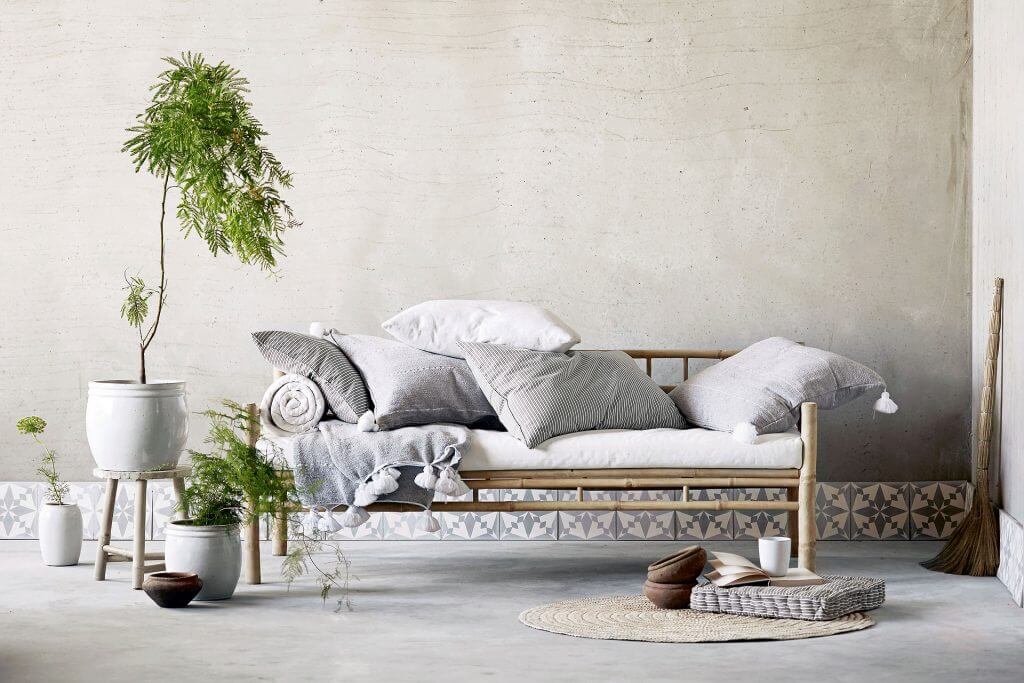
Zen decoration gives a lot of importance to the light and the colors used. The ideal is to have openings to let in as much natural light as possible , but if this is not possible, the use of artificial lighting is permitted. In this style, lamps providing soft and pleasant colors are preferred. There are also Zen effect lamps on the market.
To optimize the distribution of light indoors, it is necessary to use light shades for furniture, walls and ceilings . On the other hand, it is necessary to alternate the colors to avoid the monotonous and austere effect. It is possible to mix white with brown, taupe, ecru or even light yellow. The four walls of a room can be painted in shades of light shades to break up the monotony.
A crisp white sofa can be enhanced with cushions available in a different color such as brown and yellow. The rug can also enhance the warm and cozy atmosphere of the interior. For that, it is necessary to bet on a soft and enveloping material. Regarding the reasons, they are not banned, but must remain discreet.
4. Play with the accessories
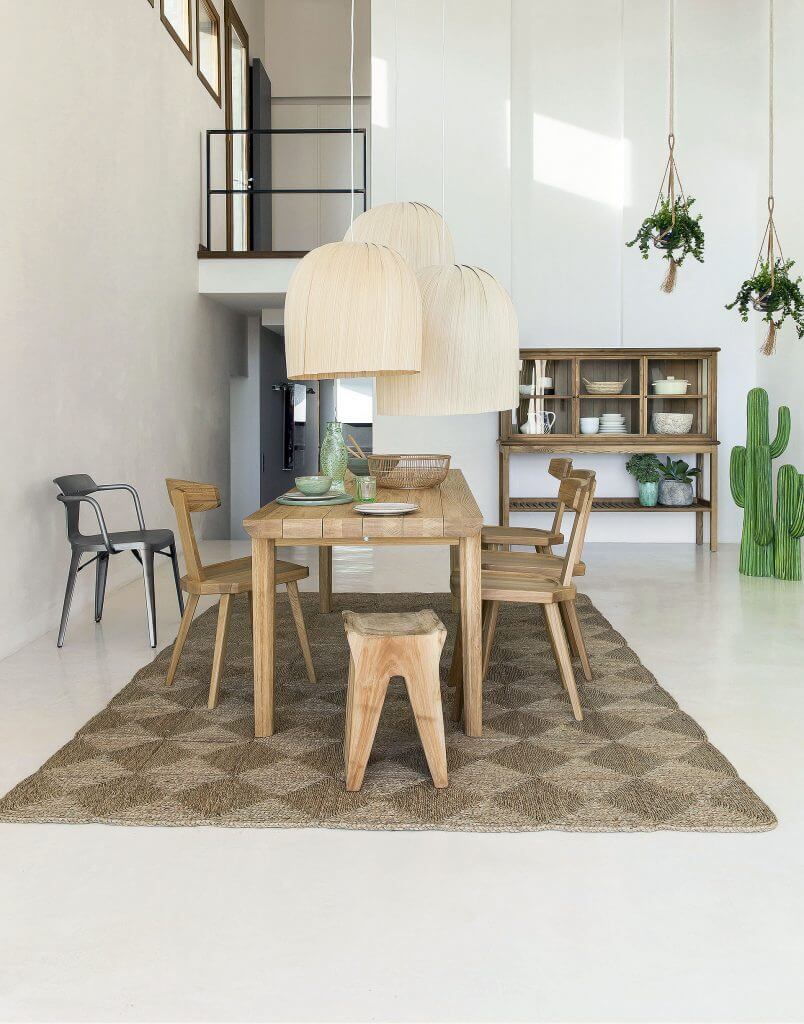
Although the basis of Zen decoration is sobriety, the use of accessories is quite permitted. They even prevent the interior from being austere and sad. On the other hand, the decorative objects must be chosen with care so as not to break the serene and harmonious atmosphere. The plants are perfect to remind the nature in the living room. Bamboo, bonsai or even orchids are the plants most used in Zen decoration, but the possibilities are endless. Everyone is free to choose the variety that brings them the most calm and serenity. On the other hand, the chosen vegetation must not be too large, at the risk of invading the space. You don’t need to have an entire forest, two or three touches of greenery are enough.
5. Choose furniture with clean lines
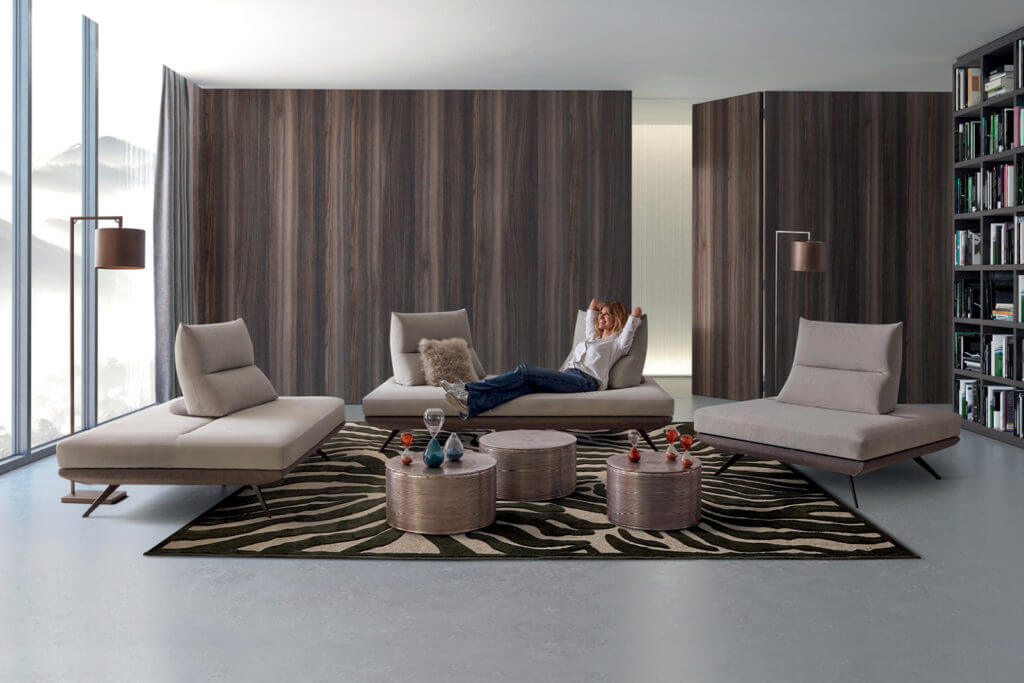
For a feeling of absolute well-being, the layout of your living room must be carefully thought out. The Zen trend is part of the logic of Feng Shui , an ancestral Chinese art that promotes the circulation of vital energies in the house. To let the “Chi” circulate freely in your space, it is important to favor furniture with simple and clean lines.
In addition, the Zen style suggests getting as close to the ground as possible. So think about choosing a low model like the LOLA SOFA. Its clean and minimalist style, combined with its removable backrests, will bring the effect you are looking for. You can combine it with large, soft cushions placed on the floor. Together, they create an atmosphere conducive to conviviality and relaxation.
6. Favor round shapes
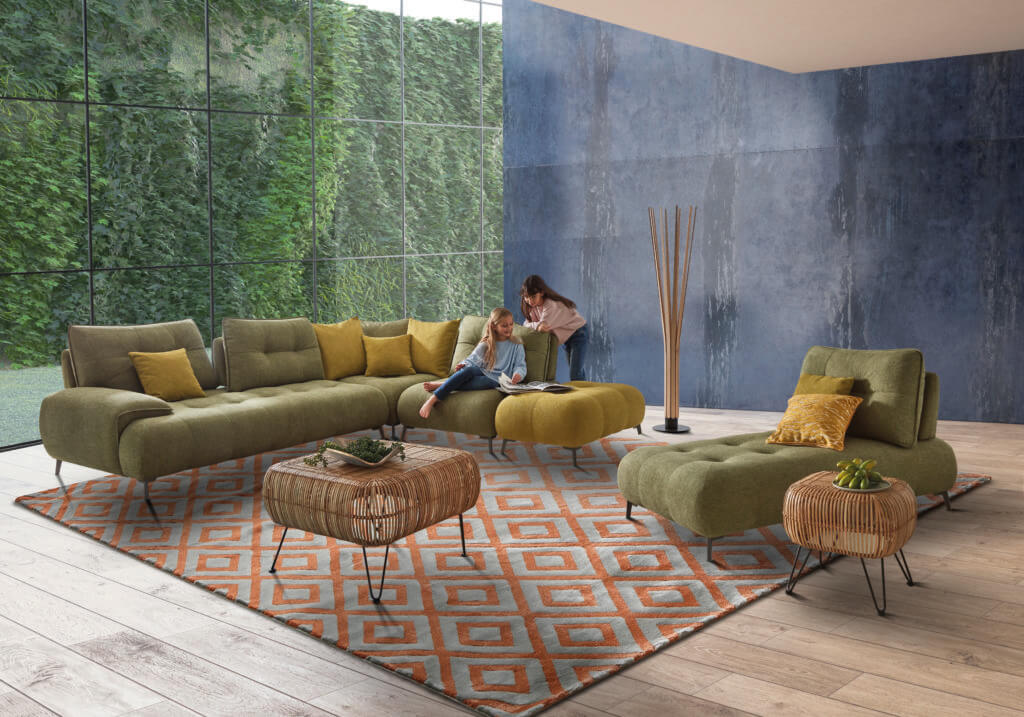
To reinforce the Zen style, round and oval shapes are also recommended. They evoke softness, peace and bring a cocooning touch. According to the Feng Shui method , sharp angles hinder the good circulation of energies : they must therefore be avoided. Pointed plants like cacti near seats, triangular objects, if they remain in the room, should be softened with tablecloths and other decorative accessories.
Curvy furniture will be softer than furniture with projecting angles. To immediately evoke an atmosphere of well-being , choose armchairs and sofas with rounded lines such as the modular sofa. Generous shapes and a soft appearance : we validate!
7. Knowing how to arrange furniture
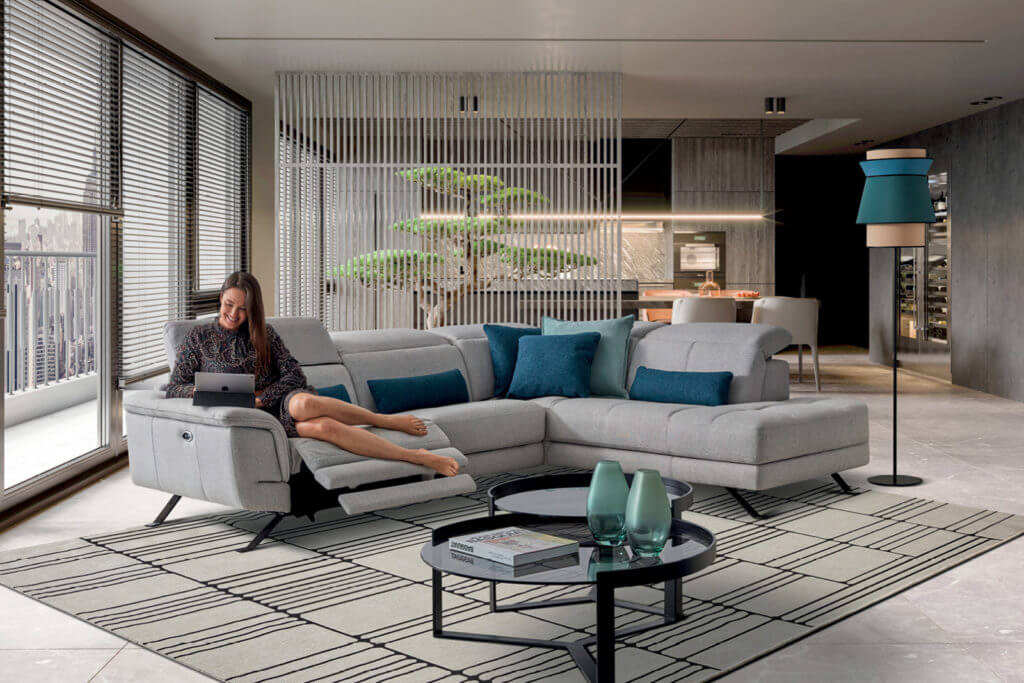
For a zen and soothing living room, you will need to create unity , form pure lines and compose a restful and graphic painting . The position of the furniture must make it possible to maintain fluidity. To give a feeling of tranquility, it is important to place the sofa in the center of the space. Likewise, the coffee table is placed in the heart of the room, in front of the sofa. It can take an ovoid shape, to accentuate this idea of union and conviviality . If you have the possibility of having several small pieces of furniture of the same type in your living room, the effect will be increased tenfold.
Finally, arrange your furniture so as to receive as much natural light as possible.
8. Multiply light sources
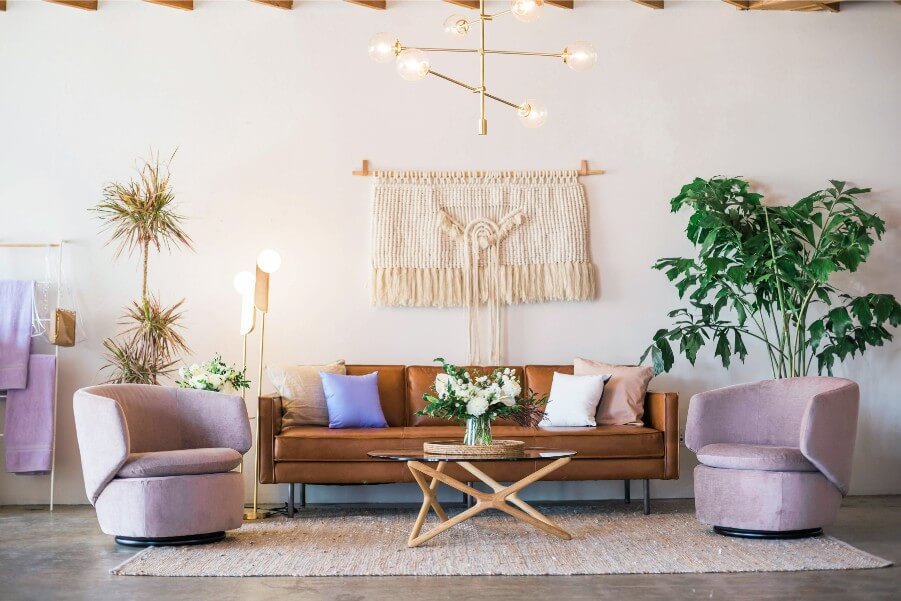
Like the atmosphere that reigns there, the lighting is also meant to be soothing. To ensure a 100% relaxing atmosphere, multiply the sources of light . Favor the use of several lights to illuminate your interior. It is preferable to have several light points , rather than a single and powerful point, so you will be able to play with the brightness as you wish.
Be careful, however, to adjust the intensity of the lighting : the light should not be too bright, but rather subdued and with warm tones. A dimmer can help you regulate the light output . You can also replace your traditional bulbs with warm light LED bulbs. During the day, the ideal is to let in as much natural light as possible through openings: windows, skylights, bay windows, etc. Finally, don’t forget the candles! Arranged everywhere in your living room, they also help to create a warm and reassuring atmosphere once night has fallen.
9. Zen atmosphere living room layout with a well-chosen color palette
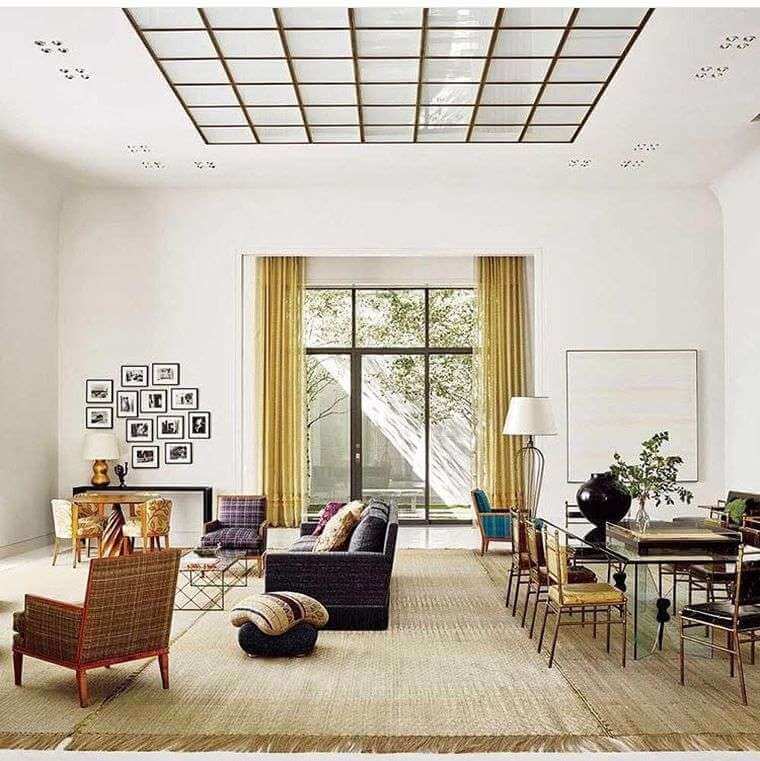
Colors are the essentials for the creation of a successful Zen decoration. This is the case in Japanese decoration and in feng shui art… but also in modern interpretations of these two oriental traditions.
So, what are the typical colors of Zen design decor? They are most often clear, warm and neutral. The three ways of interpreting the Zen style agree on this point. Soft tones are conducive to a balanced and harmonious interior. Conversely, bright and flashy shades should be avoided.
10. How to arrange a Zen living room with furniture conducive to relaxation?
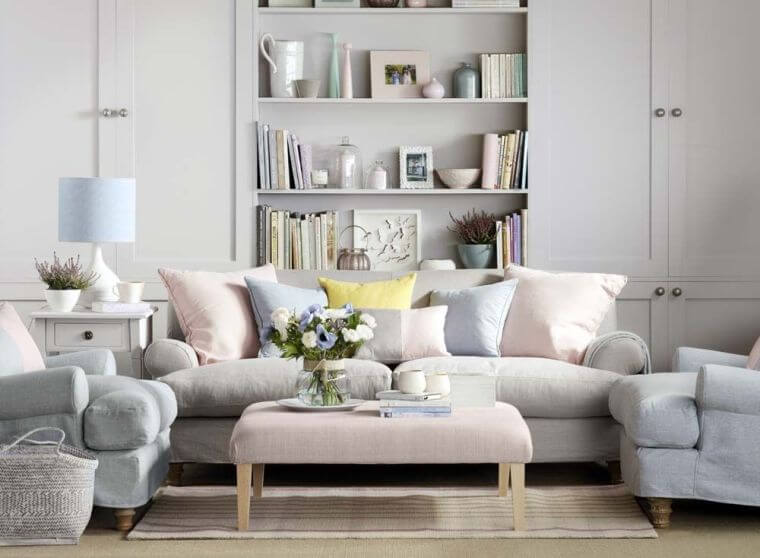
Regarding the furniture, the answer is, once again, unanimous. The Zen design lounge rhymes with carefully selected furnishings. This one should be, preferably with simple, natural lines. What’s more, classical Japanese and Chinese furniture is generally low. If you fancy a traditional Zen living room, consider furniture like this.
Otherwise, replace traditional furniture with pieces that follow these principles but give it a modern touch. Avoid anything that is too rich in ornaments and too pretentious. To keep, the furniture in classic colors for the Zen style.
11. What textiles for the Zen decor of a modern living room?
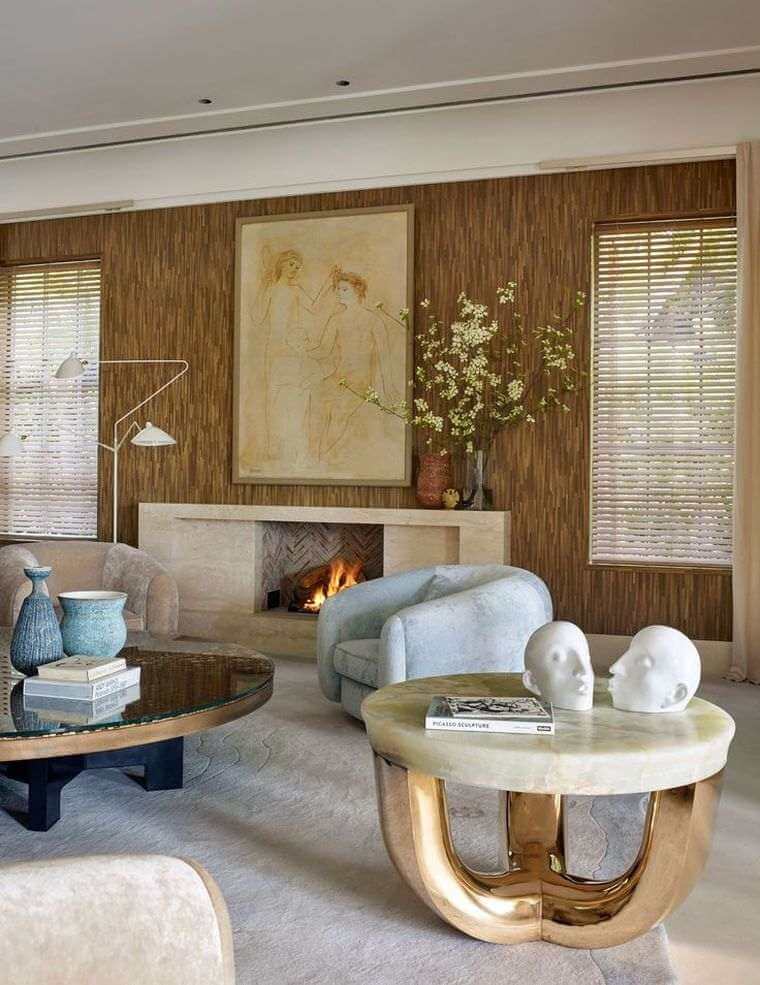
How to make a Zen interior in neutral tones more chic and modern? Our answer: by choosing the right textiles. Quality textiles are a smart way to complement modern decor. What’s more, cushions, curtains and other similar accessories allow us to make small, regular changes in our living spaces. So how do you design a Zen living room with interesting textiles? We suggest you bet on silk. Silk is a typically oriental fabric. Pleasant to the eye and to the touch, it is also quite durable. So here is an idea to remember!
12. How to design a Zen living room full of natural light?
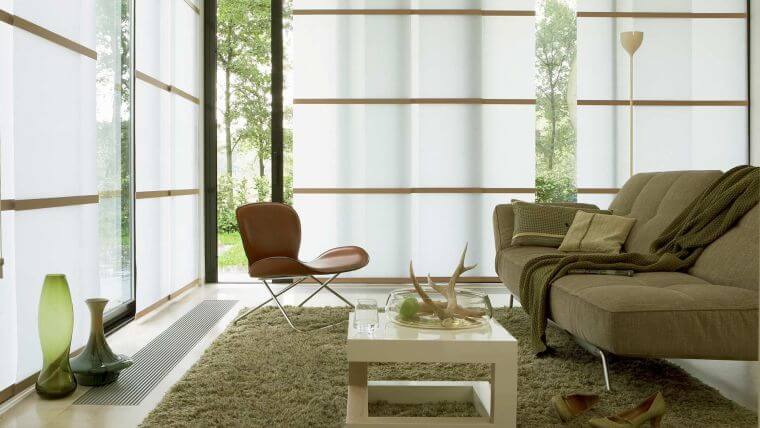
Along with artificial lighting, there is also the issue of natural light. It is a well-known fact: it contributes to our well-being and relaxation. The easiest way to furnish a modern Zen living room full of light?
Opt for large format windows. If possible, treat yourself to floor-to-ceiling windows for your living room. You will thus strengthen the link between your interior and nature outside your home.
Want a little more privacy? Protect your interior with traditional Japanese blinds. Say shoji screens, they will hide your living room while allowing light to enter freely.
13. Create a balanced zen living room by incorporating the elements of nature
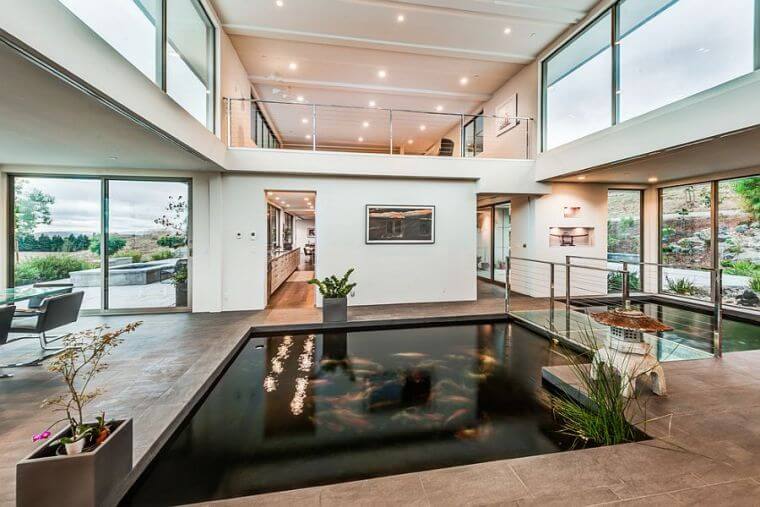
Zen tradition and feng shui decoration are also based on symbolism. This is used to help us create a relaxing ambience through the ideal balance between the elements of nature. Water, fire, air, earth… these are all elements that we will seek to invite into our Zen living room.
And when the arrangement of a living room with water basins or with a fireplace is not possible, we will use symbols that replace these elements. The objects that make us think of water and fire as well as the typical colors of each natural element are symbols that you can use for this purpose.
14. Long live the color!
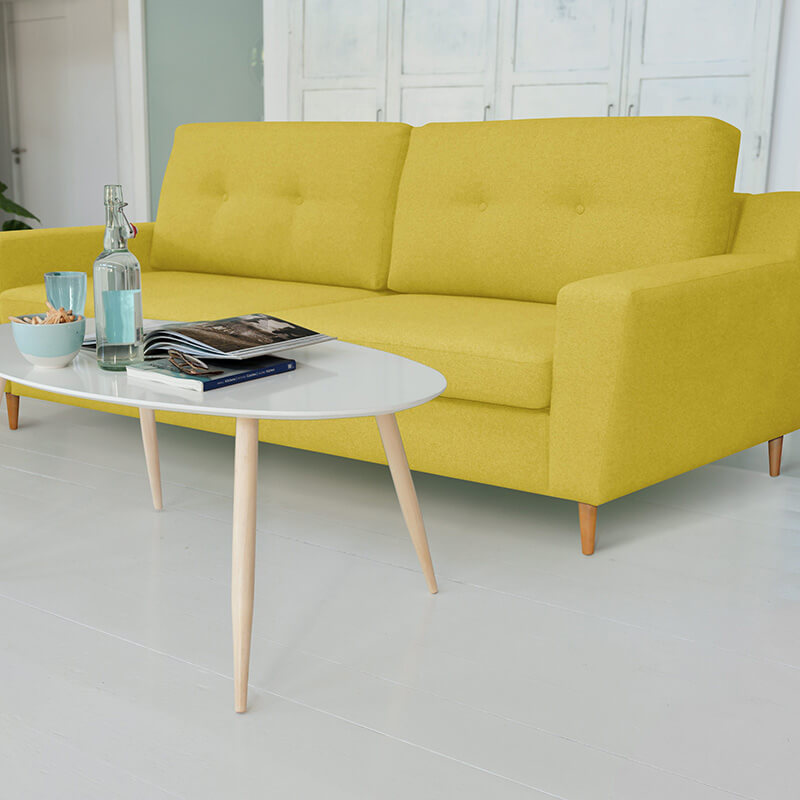
For a zen living room, do not hesitate to use color as with the feng shui yellow of this sofa.
15. The naturalness of wood
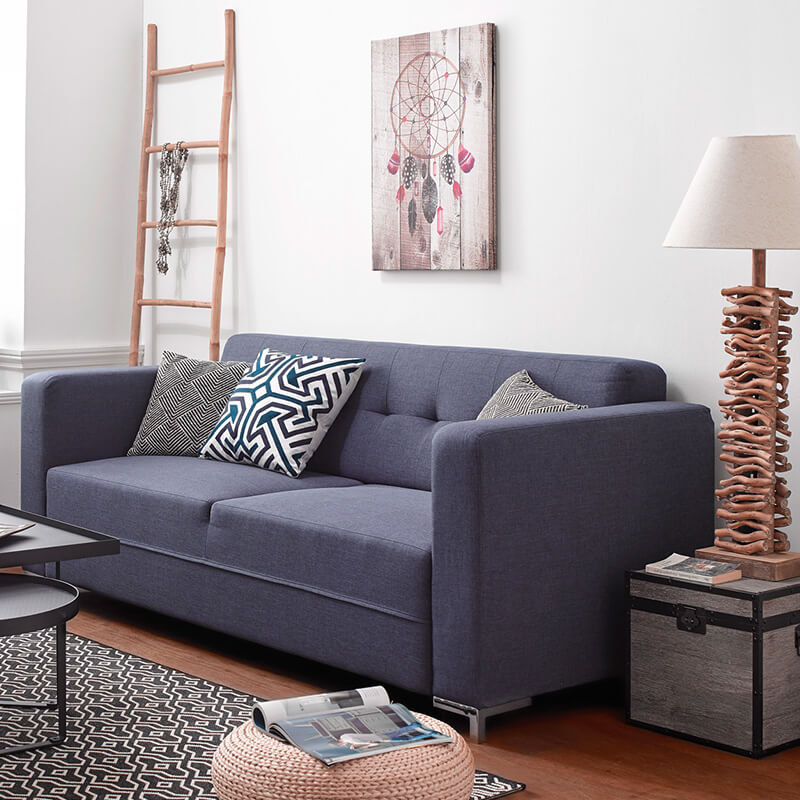
By its warm and welcoming side, wood has its place in the decor of a Zen living room.
16. The variety of wicker
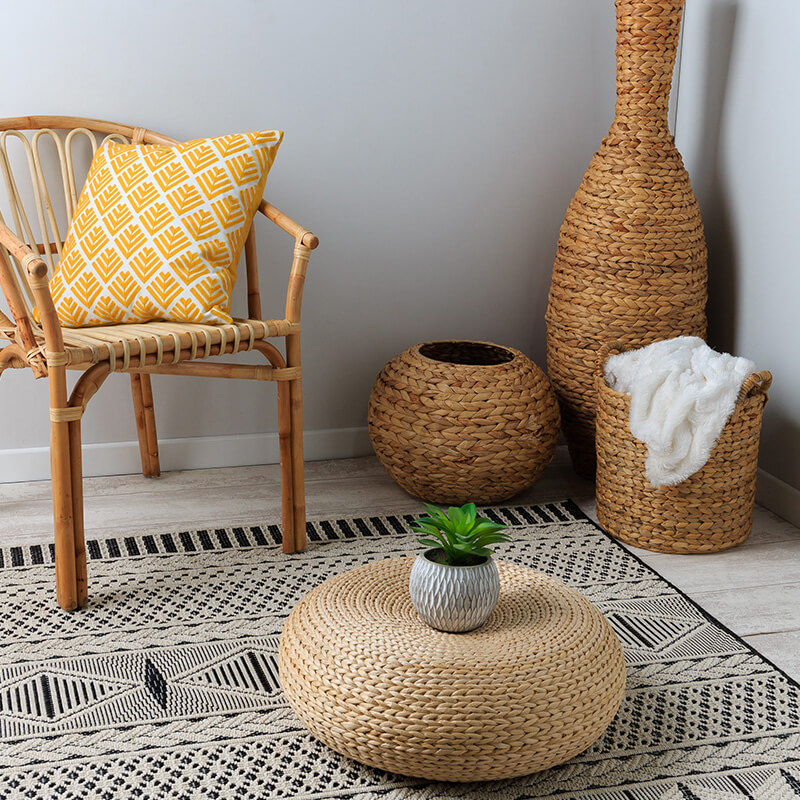
Some wicker furniture or objects are really beautiful and will nicely adorn your Zen living room.
17. Shades that relax
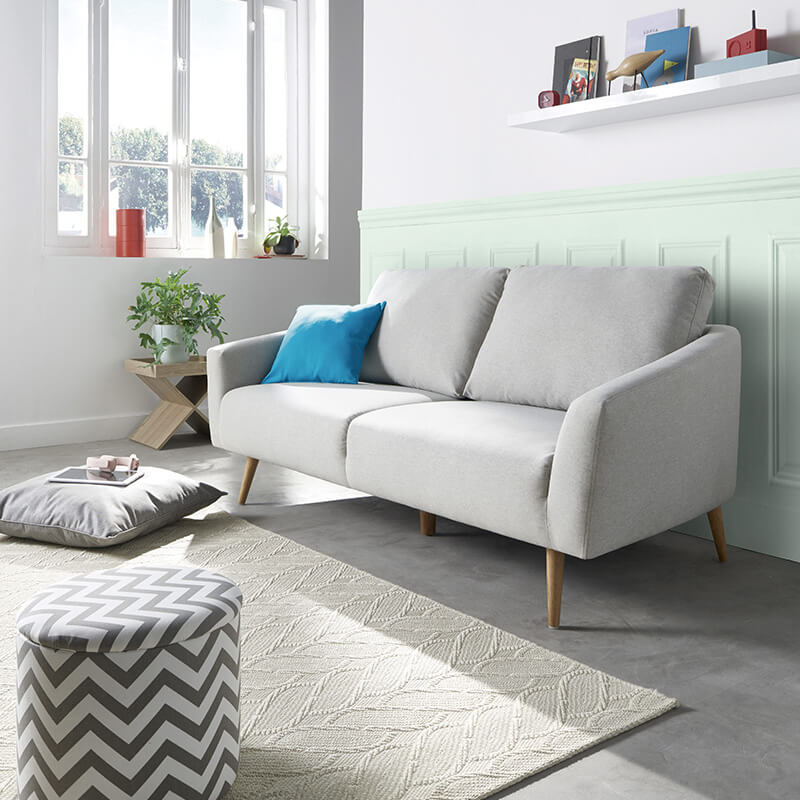
There are soothing colors that are ideal in a Zen living room . This is the case, for example, with sea green.
18. A little mellow
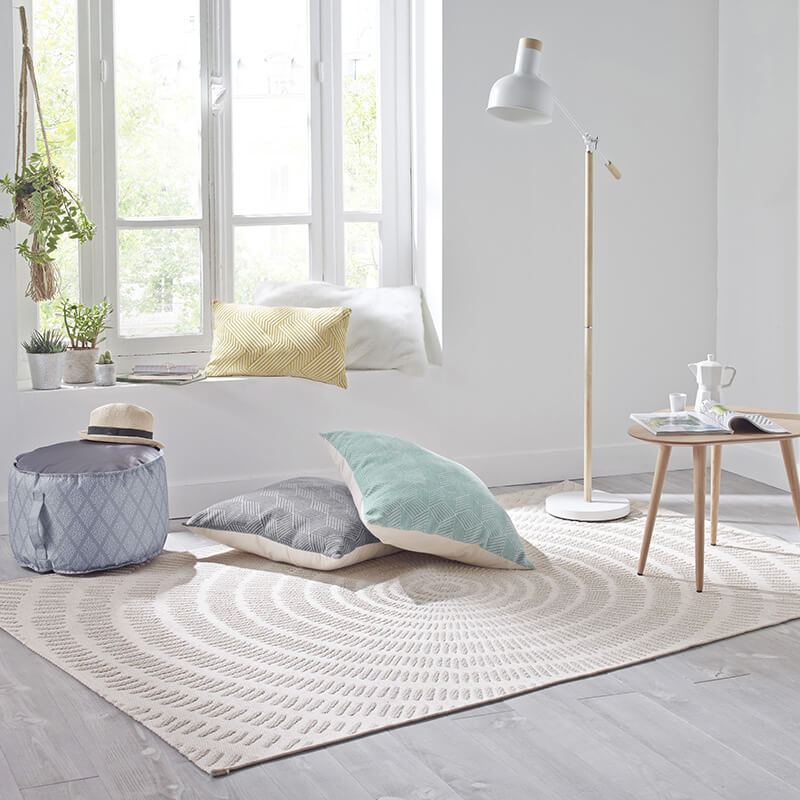
In a Zen living room, you can create a relaxing effect with cushions and rugs.
19. Wooden chests
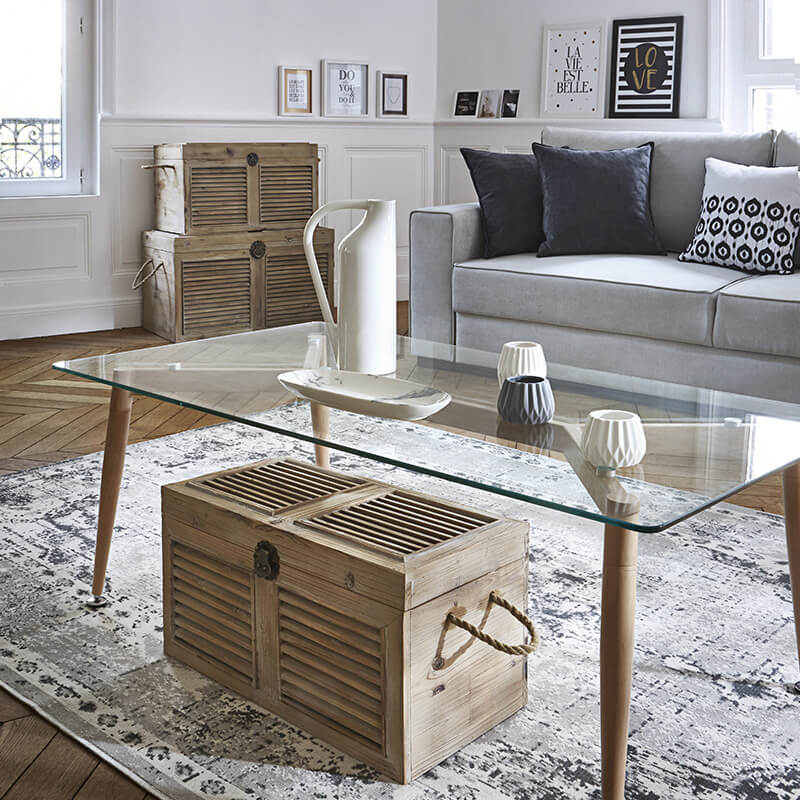
To enjoy the benefits of a Zen salon , it is essential that it be tidy. So opt for these pretty wooden storage.
20. Shades of colors
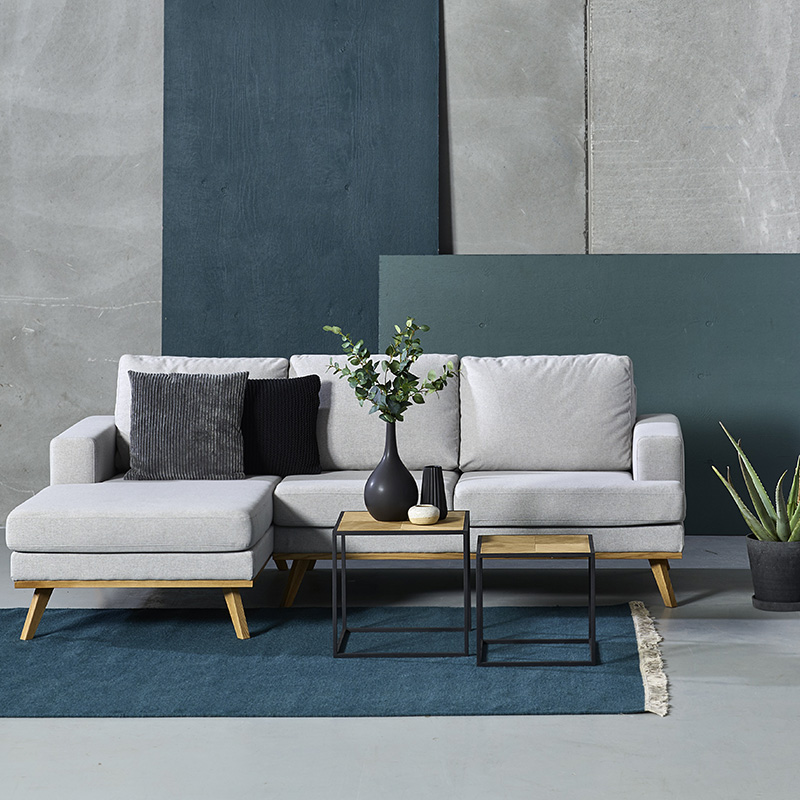
Staying in the same hues is a good way to achieve a Zen salon simply.
Bonus: Light atmosphere
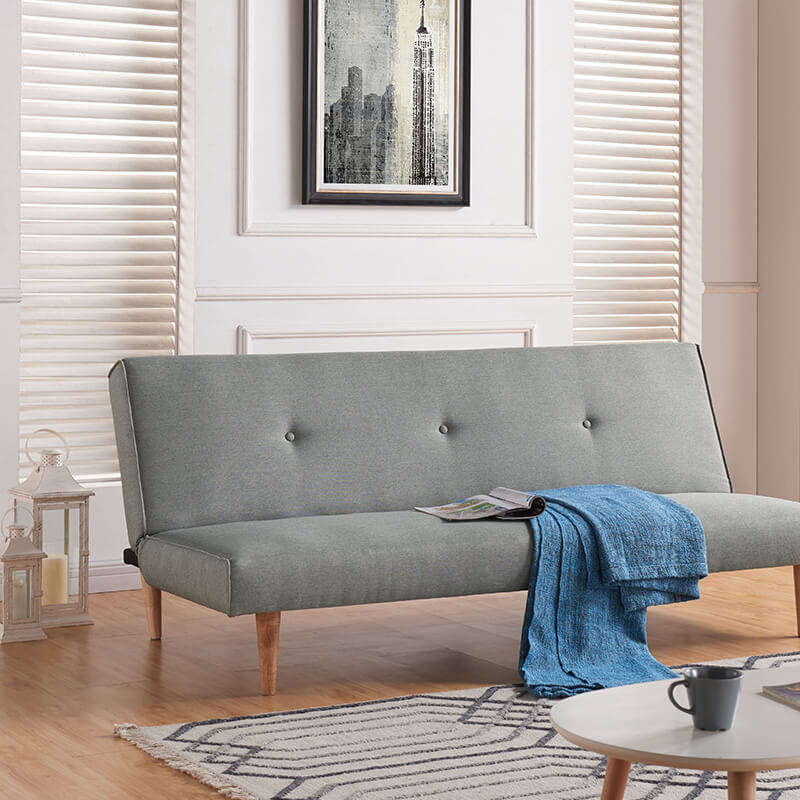
The more crowded your room, the less relaxed you will feel. Do not hesitate to refine the decor of your Zen living room.
